China’s Urban Revival: Lessons Learned
Urban renewal in China has been interwoven with its unprecedentedly swift urbanization over the past forty years. Sasaki's Dou Zhang and Ming-Jen Hsueh reflect on the rapid pace of change and lessons learned.
 Sasaki
Sasaki
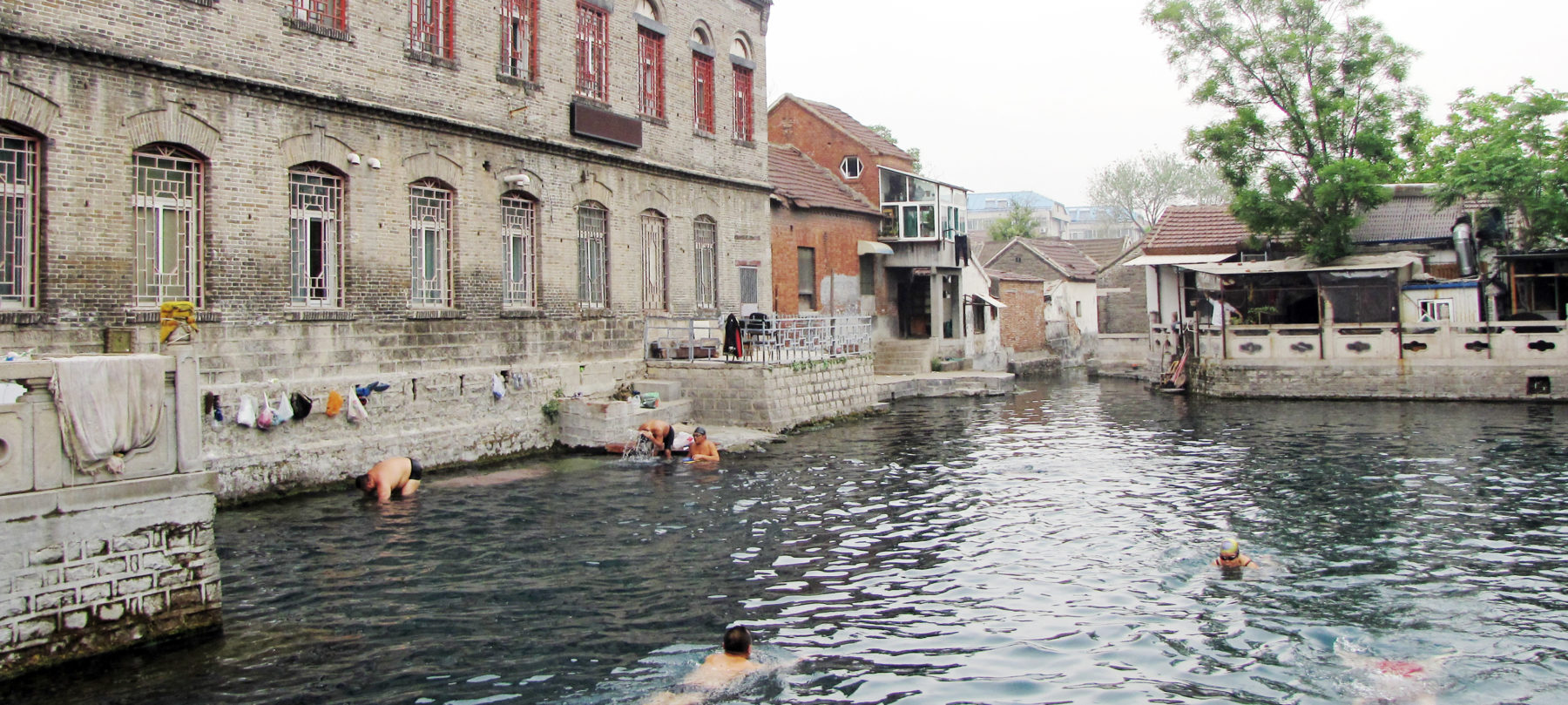
Have you ever felt a connection to the history of a place, as if the air itself brought visions of another era? Likewise, have you ever visited a place that felt bland, and lacked any unique identifying features? The difference between those two intangible sensations is often the difference between a city flush with vibrancy, and a city that, while livable, fails to ignite excitement in residents and visitors.
We know that nearly every square inch of the planet has borne witness to some moment of geological or human history—yet many new buildings, landscapes, and even entire new city districts fail to tap into those stories. As landscape architects and urban designers, we endeavor to uncover the thread that links us from the past through to today, and beyond, and infuse those representative symbols into our work.
This symbolic archaeology, however, is not without its challenges. For instance, the scale of human history in other parts of the world is often much different—and much deeper—than what we encounter in our U.S. practice. It is all too easy for Western firms to, taking Chinese culture as an example, inform their designs with worn-out tropes—such as bamboo, the yin-and-yang symbol, or the color red—yet the end results too often feels quaint and cliché. How can we bring the tales of centuries of human development to bear in the landscapes we design today?
We advocate an approach of cultural fluidity, of abstracting the aspects that tap into the local, regional, and national identity and infusing them into a productive and contemporary present. Below, we explore this approach through the lens of our ongoing project work in Jinan, capital of the Shandong Province, China.
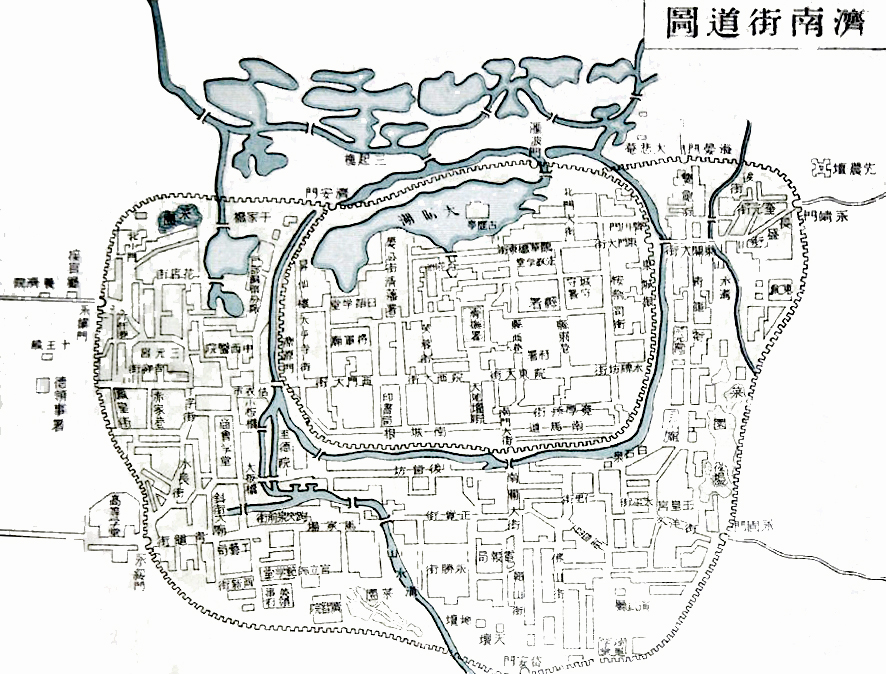
Historical map of Jinan, the City of Springs
Last year, we completed streetscape design for a portion of a new Central Business District (CBD) in Jinan. The plan for the streetscapes relied heavily on native species to create a lush, regionally-appropriate experience for residents. Please read more about that work here.
We were then selected to design four neighborhood parks spread throughout the CBD, each roughly a ten-minute walk from the others. These parks serve as gathering places for residents of Jinan. As this CBD is being built from the ground-up, the population that will soon take up residence here are not necessarily aware of the city’s history. As such, it was important to breathe metaphorical life into elements of the site’s past.
Each park is intended to highlight a unique feature about the history and culture of Jinan. Each is a “jewel” of sorts—immersing, the user in a specific aspect of Jinan. Taken together, the parks form a full spectrum of context for the city’s geological, historical, and economic history.
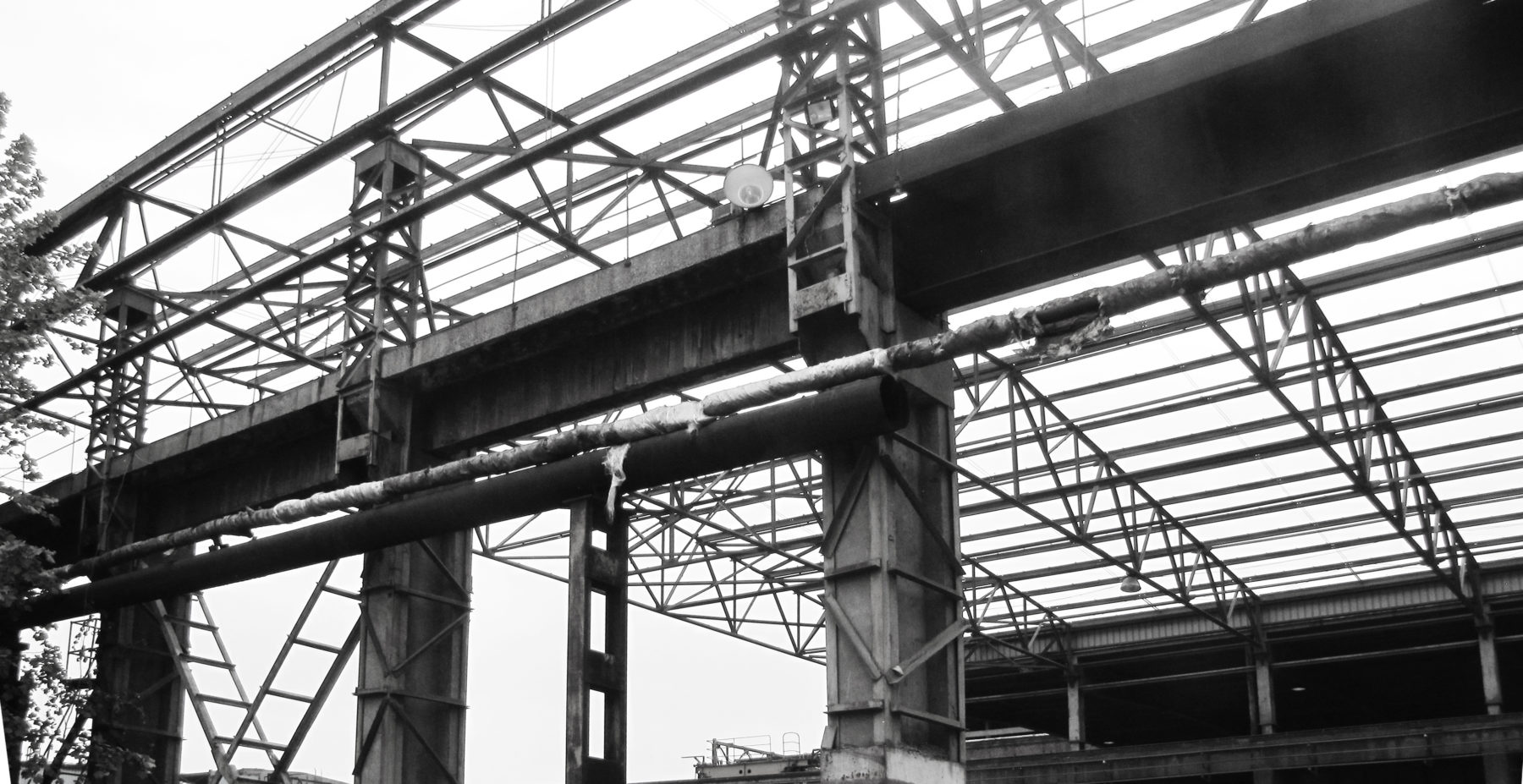
Former factory structures still populate the site
A fragment of the larger southern mountain range of Jinan, Guishan Hill serves as a visual identifier for the region. Over time, the geological force of water erupting from layers of stone gave form to the larger mountain system. The park challenges how we interface with that remaining fragment, a piece that has broken off from the larger system and continues to “break” from surrounding pressures of urbanization. Unique implementation techniques for reinforcement and stabilization of the hillside combine to reconnect Guishan Hill physically and programmatically to the surrounding community and the urban fabric. The design of the landscape integrates the user into the experience of stabilization, creating a variety of ways to get to the top of the mountain.
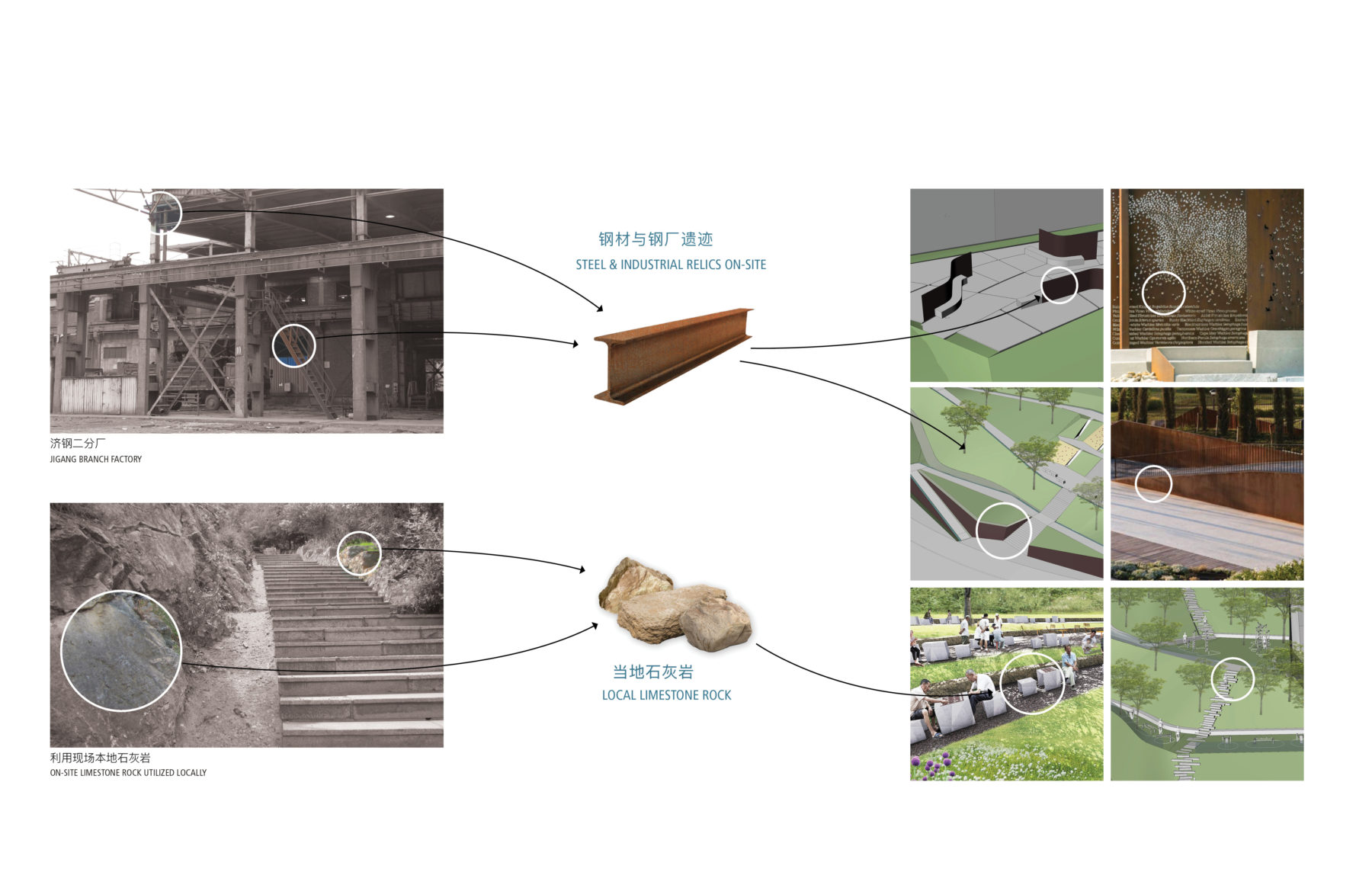
Using locally-inspired materials to restore and stabilize hill sides
Situated at the juncture of the former Jinan industries of steel, agriculture, and orchards, Greenland Park continuously twirls you through the experience of urban memory while evoking a new culture of collective memory. The park is divided into five unique “rooms” that educate the public on environmental stewardship. Each room is designed around reading, dining, carbon sequestration, pollination, cultural recreation and contemplation. Childhood games of old Jinan are embedded throughout, giving rise to a strong sense of neighborhood. The central Memory Trail reflects the materiality of the steel-making process through the varying structures of dark stone and molten lava-colored plantings in the fall.
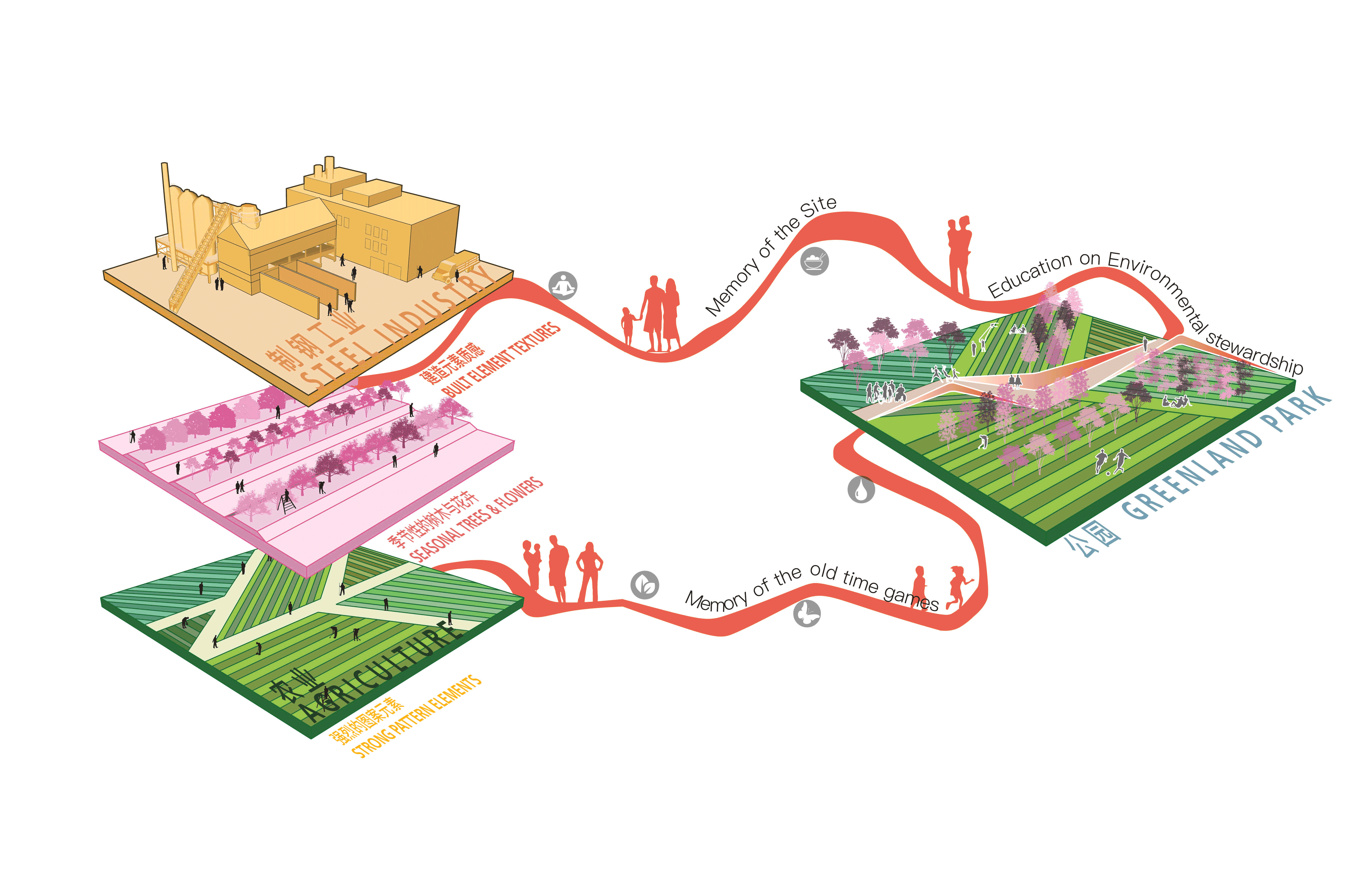
Materials and programming are inspired by the land-use histories of the site, with an overlay of play and environmental education
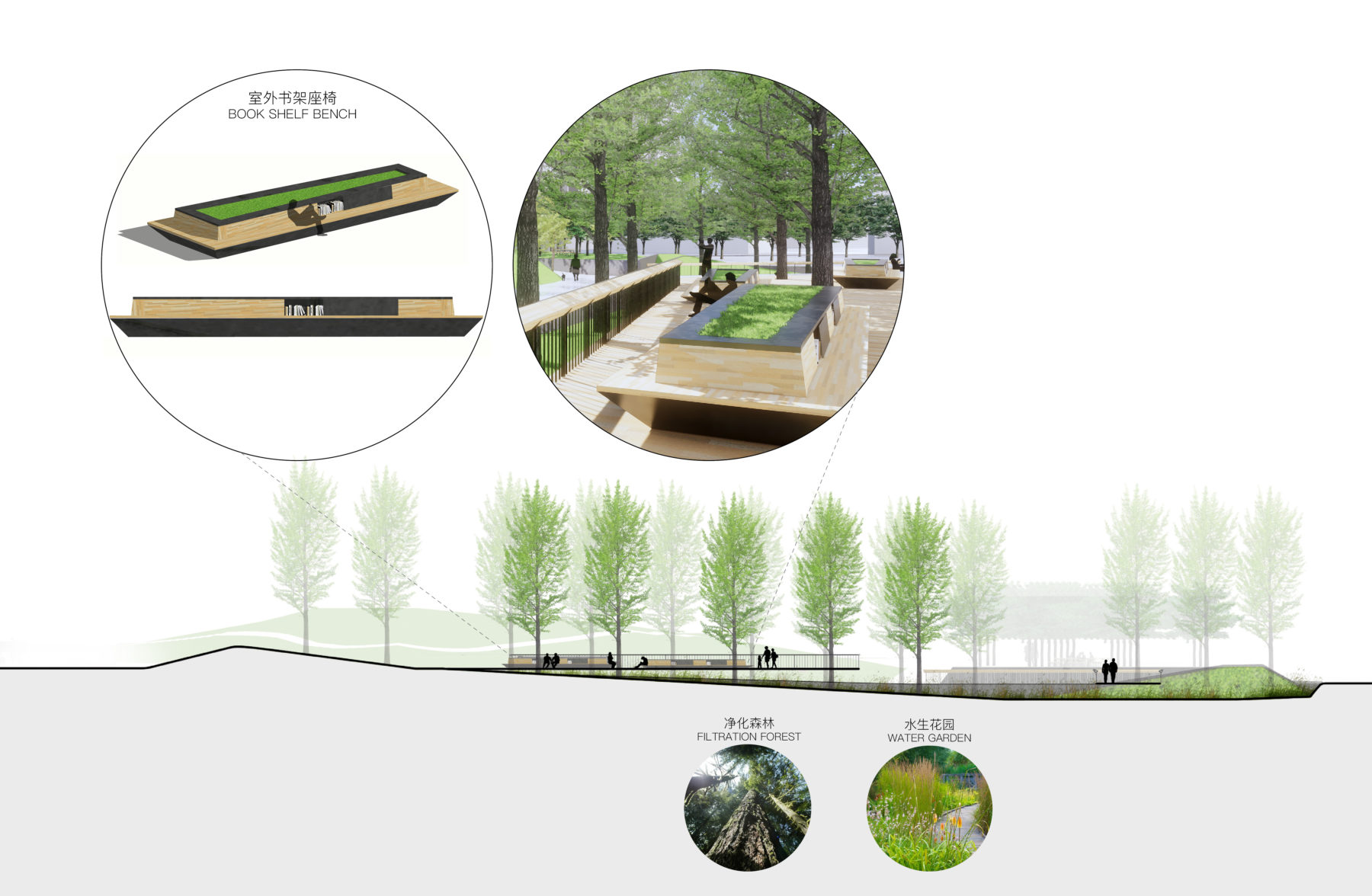
Piers with seating for people to relax and read also incorporate water filtration gardens
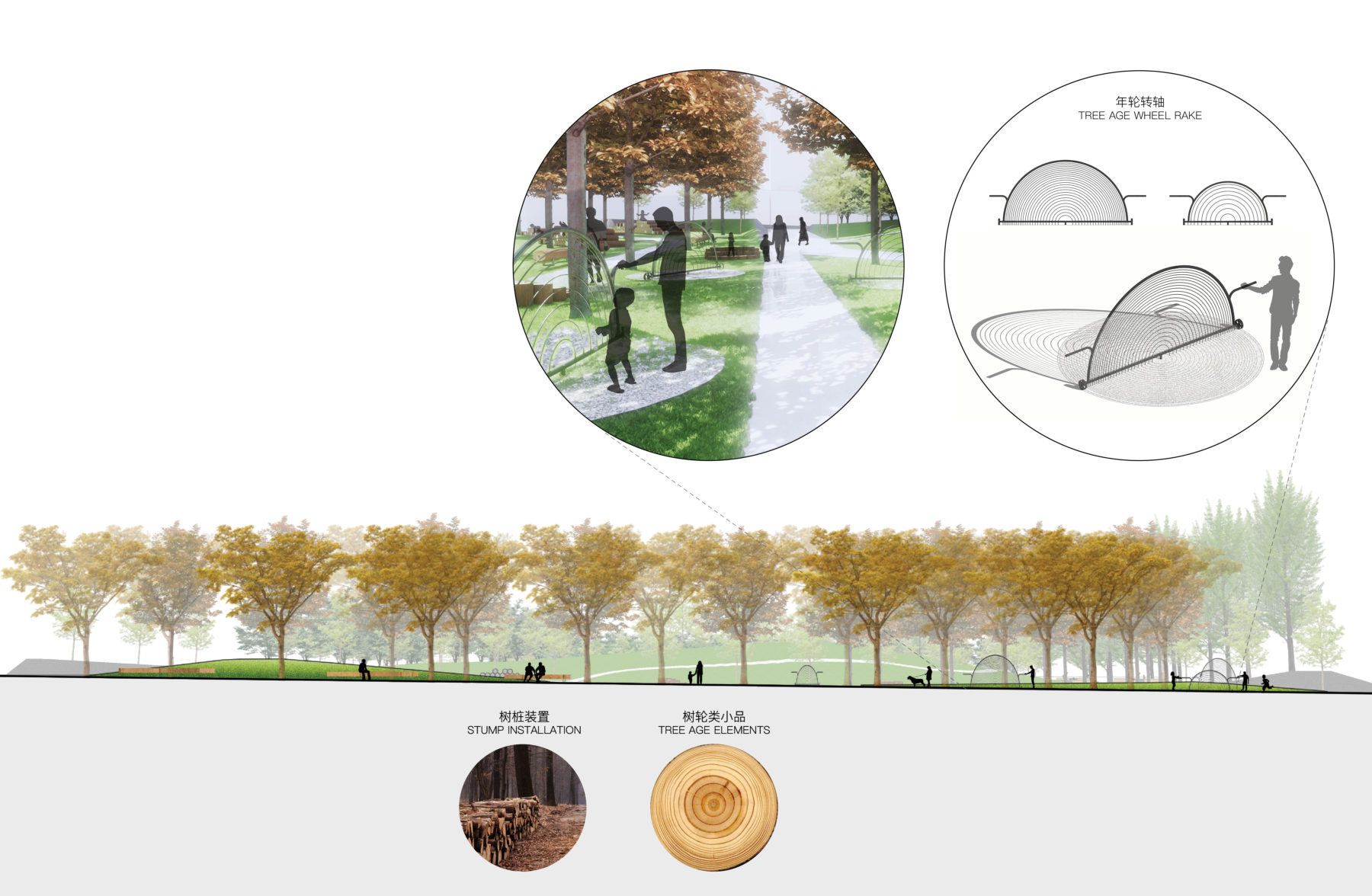
Play elements are integrated through the Carbon Forest, which also includes public education elements on the carbon sequestration process
Surviving fragments of Jinan poetry are interpreted through landscape—awakening the five senses through the creation a fully-immersive experiences of nature in dynamic gardens surrounded by the City. The relaxing rustle of bamboo, the singing of birds and the echo of ancient stone chimes activated by the user as well as the wind combine together in the Sound Forest. Drifts of cherry blossoms gather on the surface of the Urban Gallery covered in shadows and light projected from the “Wind of the Sun” above. Children’s hands move across contrasting textures of stone, balance within the soft texture of grasses and grasp onto the branches of soft willows above in the Touch Garden. A family enjoys a picnic together under the leaves of orchard trees, while others meditate among the scents of lavender, jasmine, and rose within the Taiji Aromatherapy Garden. Landscape experiences continuously summoning the culturally-significant voices of Jinan’s famous poets: Li Qingzhao, Xin Qiji, Lao She and others.
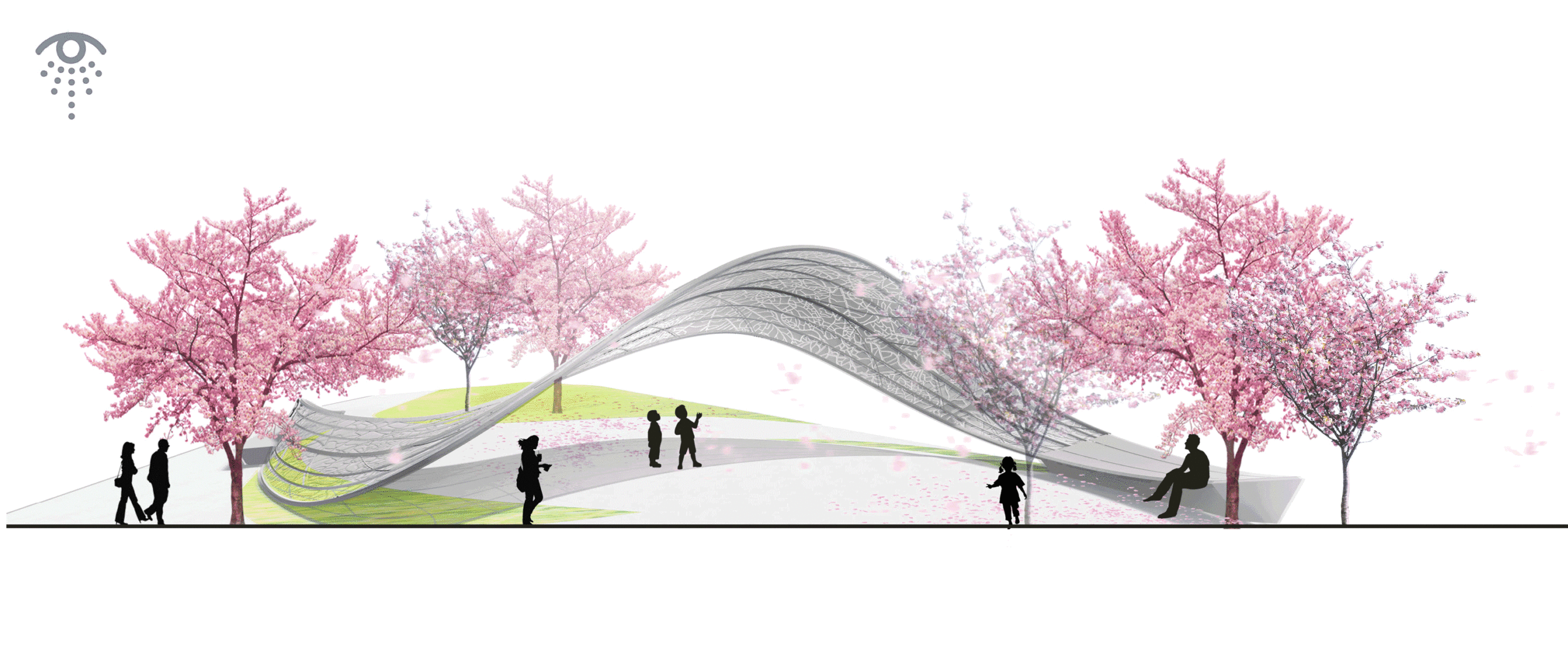
The park gardens embrace different senses, with special landscape elements inspired by poems
China, along with other countries with similarly booming building sectors, is often presented with a unique paradox: how can fast-paced development be maintained without erasing the vitality of history? Moreover, how can those responsible for bringing about a vision for new development do so in a culturally sensitive and fluid way—so that residents can connect with elements of the past that don’t feel cliché or quaint?
Jinan, as the capital city of Shandong, represents an important tale. Its culture stretches back to the dawn of humanity, weaving a rich tapestry of geology, history, and human achievement. By researching the elements that comprise this fabric of meaning, and then abstracting those elements into spatial and experiential design, we hope to inspire vibrancy and awe in those who live by and visit Jinan’s newest neighborhood parks.